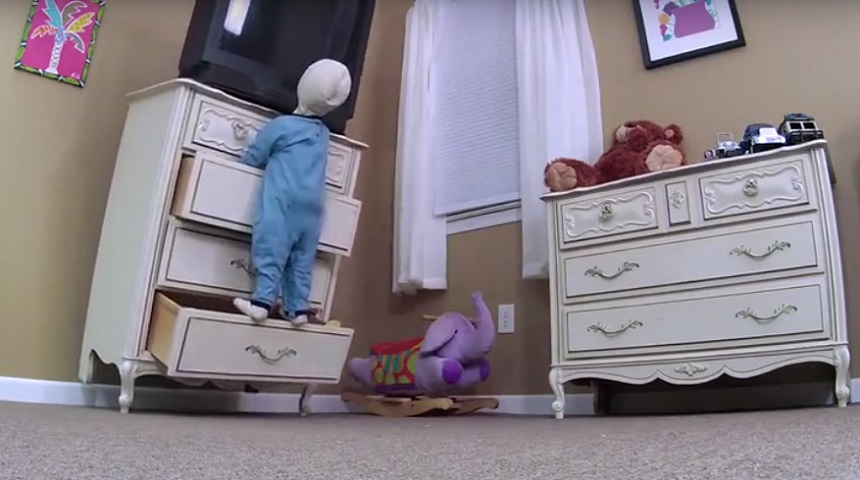STURDY signed into law; will supersede CPSC rule

WASHINGTON – The Stop Tip-overs of Unstable, Risky Dressers on Youth Act – referred to as STURDY – changed into handed through Congress Dec. 23 as a part of the $1.7 trillion financial 2023 omnibus spending bill. It changed into signed into law while President Biden signed the spending package.
The passage is ideal information for the American Home Furnishings Alliance, who hostile the Consumer Product Safety Commission’s tip-over popular posted withinside the Federal Register past due November. STURDY isn’t like this legislation, which might have taken impact May 24, 2023. STURDY will supersede this CPSC rule.
“We applaud the passage of the STURDY Act, which has subsequently positioned us on the right track for a rigorous, obligatory fixtures balance rule supported through all stakeholders,” stated AHFA CEO Andy Counts.
STURDY calls for the CPSC to undertake an up to date model of the ASTM International F2057 voluntary popular as a brand new obligatory protection rule, if it’s far discovered to satisfy all overall performance necessities mentioned in STURDY.
According to the AHFA, the ones necessities encompass objective, repeatable and measurable assessments that simulate real-international use of garb garage fixtures, together with checking out with more than one drawers open and with all drawers loaded. Testing additionally should account for the effect on balance while gadgets are positioned on carpeting and while small youngsters climb or play at the unit.
Revisions to satisfy those necessities had been advanced through ASTM’s Furniture Safety Subcommittee past due closing summer.
“With the up to date ASTM popular because the foundation, this new product protection rule will offer producers with a clean pathway to compliance,” stated Bill Perdue, AHFA’s vp of regulatory affairs.
In a brand new timeline negotiated through AHFA amongst key stakeholders withinside the closing weeks of 2022 and covered withinside the amended STURDY Act handed on Dec. 23, ASTM has 60 days to submit the revisions defined above, formally updating F2057 to satisfy the necessities mentioned in STURDY. Then, CPSC can have ninety days to check the up to date voluntary popular and determine whether or not it’s going to undertake it in complete or in element as the brand new obligatory balance rule for garb garage fixtures.
“Industry, mother and father and customer advocates have all agreed that the revisions to ASTM F2057 bring about a strong protection popular to be able to lessen fixtures tip-overs and enhance protections for small youngsters,” Counts stated. “All of those stakeholders look ahead to CPSC’s set off movement to undertake F2057 because the federal protection rule mandated in STURDY.”
The new balance rule will cross into impact a hundred and twenty days after it’s far promulgated through CPSC. This rule will supersede the very last rule CPSC followed in November.
“AHFA hostile the CPSC rule due to the fact the complicated procedure of figuring out a unit’s ‘balance rating’ delivered needless ambiguity to compliance efforts,” stated Bill Perdue, AHFA’s vp of regulatory affairs. “Further, there has been a lot variability withinside the prescribed take a look at techniques that, even six weeks after the guideline of thumb’s publication, we understand of no take a look at lab that could conform to carry out third-celebration verification of a manufacturer’s take a look at results. There changed into no clean pathway for domestic fixtures agencies to conform and, consequently, no clean pathway for regulators to sincerely put in force the brand new rule.”
AHFA additionally maintained that the redesign, checking out, packaging and transport expenses attributable to the guideline of thumb might disproportionately effect lower-fee gadgets and make all garb garage fixtures extra highly-priced with out enhancing protection.
In the revised F2057 popular, 3 assessments are prescribed: one with all drawers loaded with 8.five kilos consistent with cubic foot, primarily based totally at the calculated extent of every drawer; one simulating the effect on balance while the unit is positioned on carpeting; and a 3rd simulating the dynamic pressure of a little one grabbing onto the highest “hand-hold” (normally a drawer pull or knob). Units should continue to be upright all through all 3 pass/fail assessments to be deemed compliant.
